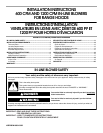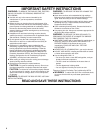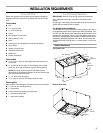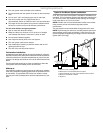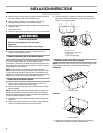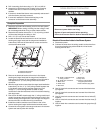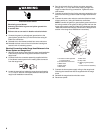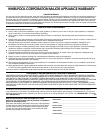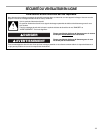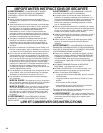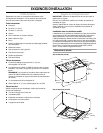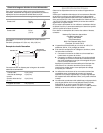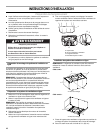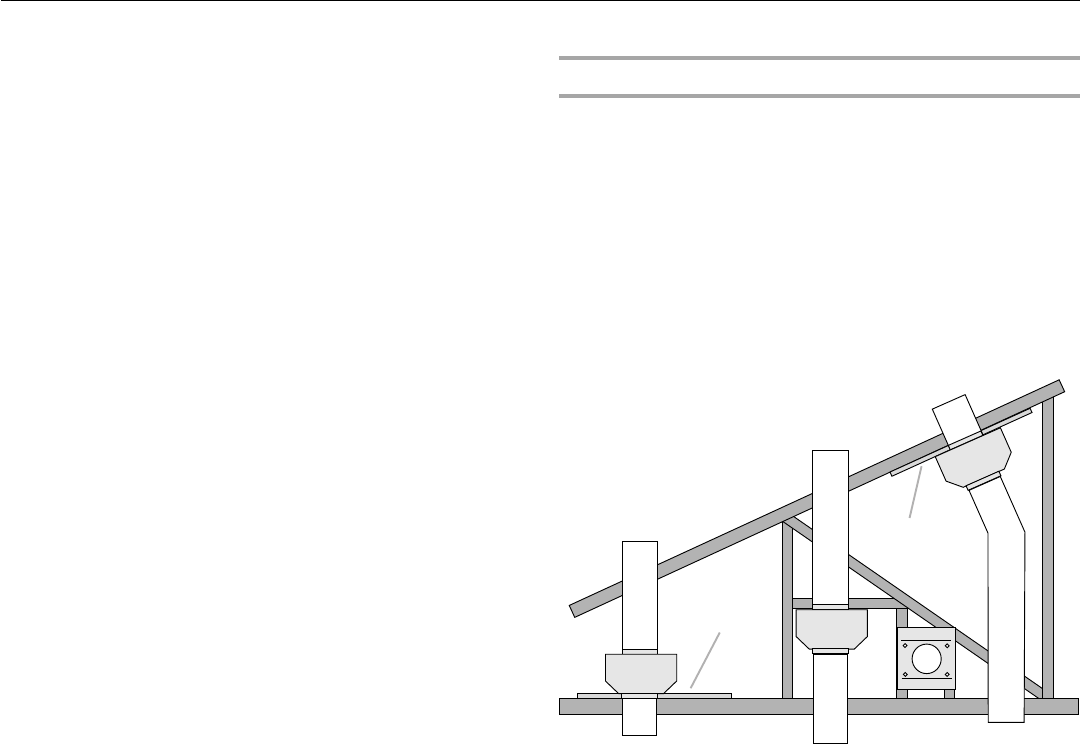
4
Venting Requirements
■ The vent system must terminate to the outdoors.
■ Do not terminate the vent system in an attic or other enclosed
area.
■ Do not use 4" (10.2 cm) laundry-type vent or wall caps.
■ Use round, metal vent only. Rigid metal vent is
recommended. Plastic or metal foil vent is not recommended.
■ The length of the vent system and number of elbows should
be kept to a minimum to provide efficient performance.
For the most efficient and quiet operation:
■ Use no more than three 90° elbows.
■ Make sure there is a minimum of 24" (61.0 cm) of straight
vent between the elbows if more than 1 elbow is used.
■ Do not install 2 elbows together.
■ Use clamps to seal all joints in the vent system.
■ The vent system must have a damper.
■ Use weatherproof caulking to seal the exterior wall or roof
opening around the cap.
■ The size of the vent should be uniform.
Cold weather installations
An additional back draft damper should be installed to minimize
backward cold air flow and a thermal break should be installed to
minimize conduction of outside temperatures as part of the vent
system. The damper should be on the cold air side of the thermal
break.
The thermal break should be as close as possible to where the
vent system enters the heated portion of the house.
Makeup air
Local building codes may require the use of makeup air systems
when using ventilation systems greater than the specified CFM of
air movement. The specified CFM varies from locale to locale.
Consult your HVAC professional for specific requirements in your
area.
Typical In-line Blower System Installations
A 10" (25.4 cm) round vent system is needed for installation (not
included). The in-line blower system inlet and outlet openings are
10" (25.4 cm) round. The exhaust (outlet) opening on the range
hood must also be 10" (25.4 cm) round.
NOTE: Flexible vent is not recommended. Flexible vent creates
back pressure and air turbulence that greatly reduce
performance.
The vent system can terminate either through the roof or wall.
NOTE: Plywood may be used as a mounting base to span open
areas between ceiling joists and rafters. If used, be sure to use
plywood capable of supporting the weight of the in-line blower
system (50 lb [22.6 kg]).
A.Mount on top of ceiling joists.
B. Mount from cross-members tied to trusses.
C.Duct horizontal, mount to cross-members tied to trusses.
D.Mount on underside of rafters.
E.Plywood
A
B
C
D
E
E



